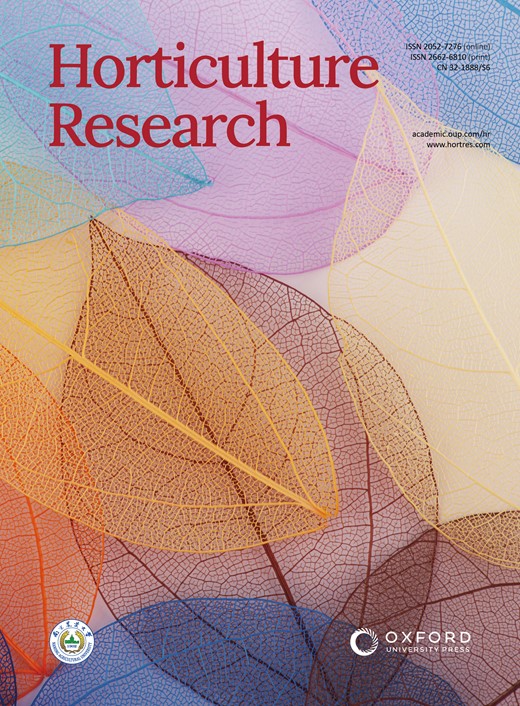通过与桃中保守基因的相互作用将新基因整合到调控网络中
IF 8.7
1区 农林科学
Q1 Agricultural and Biological Sciences
引用次数: 0
摘要
新基因可以从非编码序列 "从无到有 "地进化,在生物体内获得新的功能,并在进化过程中融入调控网络,从而推动重要表型和性状的创新。然而,鉴定新基因具有挑战性,因为它需要来自近缘物种的高质量基因组。通过与九个亲缘关系较近的李属植物基因组比较,我们在柿树'白凤'中确定了至少 178 个新基因。新基因与保守基因在基因特征和表达模式上存在明显差异。基因本体(GO)富集分析表明,第一类新基因来源于与质体修饰功能相关的序列,而第二类基因则推断来源于与生殖功能相关的序列。最后,不同组织和发育阶段的转录组测序结果表明,新基因在进化过程中加入了现有的调控网络,在植物生长和发育过程中发挥了重要作用,WGCNA 分析和定量性状位点数据也支持了这一点。这项研究为今后研究梅花及相关类群基因的起源和功能奠定了基础。本文章由计算机程序翻译,如有差异,请以英文原文为准。
De novo gene integration into regulation networks via interaction with conserved genes in peach
De novo genes can evolve 'from scratch' from non-coding sequences, acquiring novel functions in organisms and integrating into regulatory networks during evolution to drive innovations in important phenotypes and traits. However, identifying de novo genes is challenging, as it requires high-quality genomes from closely related species. According to the comparison with nine closely related Prunus genomes, we determined at least 178 de novo genes in P. persica ‘baifeng’. The distinct differences were observed between de novo and conserved genes in gene characteristics and expression patterns. Gene ontology (GO) enrichment analysis suggested that Type I de novo genes originated from sequences related to plastid modification functions, while Type II genes were inferred to have derived from sequences related to reproductive functions. Finally, transcriptome sequencing across different tissues and developmental stages suggested that de novo genes have been evolutionarily recruited into existing regulatory networks, playing important roles in plant growth and development, which was also supported by WGCNA analysis and quantitative trait loci data. This study lays the groundwork for future research on the origins and functions of genes in Prunus and related taxa.
求助全文
通过发布文献求助,成功后即可免费获取论文全文。
去求助
来源期刊

Horticulture Research
Biochemistry, Genetics and Molecular Biology-Biochemistry
CiteScore
11.20
自引率
6.90%
发文量
367
审稿时长
20 weeks
期刊介绍:
Horticulture Research, an open access journal affiliated with Nanjing Agricultural University, has achieved the prestigious ranking of number one in the Horticulture category of the Journal Citation Reports ™ from Clarivate, 2022. As a leading publication in the field, the journal is dedicated to disseminating original research articles, comprehensive reviews, insightful perspectives, thought-provoking comments, and valuable correspondence articles and letters to the editor. Its scope encompasses all vital aspects of horticultural plants and disciplines, such as biotechnology, breeding, cellular and molecular biology, evolution, genetics, inter-species interactions, physiology, and the origination and domestication of crops.
 求助内容:
求助内容: 应助结果提醒方式:
应助结果提醒方式:


